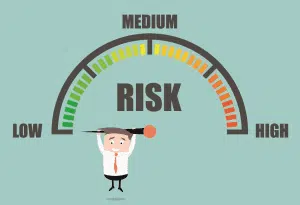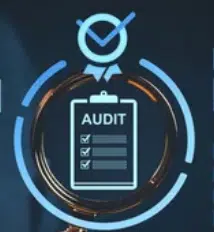
Risk Management and Competency Management - the link
Competency-based risk management links validated skills to critical risk controls, cutting incidents, compliance breaches and reputational damage. This Centranum guide shows how to map competencies to risk scenarios, audit gaps, use targeted training, and track workforce readiness through software dashboards that satisfy regulators.
Why connect Risk & Competency Management
Risk is a priority
True for most Boards and Governance bodies today.
A 2018 study for the Institute of Directors identifies Human Capital Risk as a major concern for over 83% of respondents. The study focused mostly on the loss of key staff.
Yet human error is really the major Human Capital risk.

Risk Management Process
The risk management process includes;
- identification of potential risks or hazards
- analysis for probability of occurrence and ranking of the risks
- planning risk response – risk elimination or reduction strategies
- monitoring risks and the effectiveness of risk management strategies
Reducing human error (bias-aware practices)
The risk management process is critical. Yet risk is often underestimated. Engineers, scientists and other professionals believe they think rationally and have covered all the possibilities. Yet they are largely unaware of the psychological aspects of risk.
Cognitive shortcuts (recency, confirmation, overconfidence, group-think, optimism, availability) can blind teams to risk.
The Critical Thinking competency is a key tool to improve thinking and judgments about risks.
How Competency Management contributes
How competency supports each risk step;
• Identification → Translate top risks into the tasks and controls people must execute (e.g., isolation/lockout, medication administration, change approvals).
• Analysis → Specify the capability and proficiency level required per role; raise levels as activity scope/independence/risk/complexity increases.
• Response → Define evidence standards (what proof counts) and re-validation timeframe by risk (e.g., quarterly for high-risk, annually for medium).
• Monitoring → Track competency coverage, assessment recency, gaps, and corrective actions in competency matrix and individual development dashboards.
Evidence that satisfies regulators
For any risk/control, you should be able to show—instantly:
• Who is competent for which control and at what level.
• When and how competence was last assessed (method + assessor).
• The evidence (observation notes, simulation results, documentation review).
• Exceptions and planned corrective actions with due dates.
• History of the competency and assessments – true to version.

Benefits you can count
• Fewer incidents and near-misses; faster corrective actions.
• Better audit outcomes (time saved and fewer findings).
• Shorter time-to-proficiency for new hires and job movers in risk roles.
• Reliable staffing for bids and high-risk tasks (who’s ready now, who’s nearest-ready).
• Clearer accountability and culture (people pay attention to what’s measured).
Implementation path (start small)
1. Pick one high-risk scenario and one job family.
2. Draft a minimal set of competencies and indicators
3. Define evidence standards and assessment timeframe based on risk level.
4. Map to role profiles and pilot the assessment with one site/team.
5. Adjust competencies and mapping if needed in a revised version.
6. Review the skills matrix dashboard for skills gaps, coverage and development plans to close the gaps.
7. Expand to the next risk scenario.
